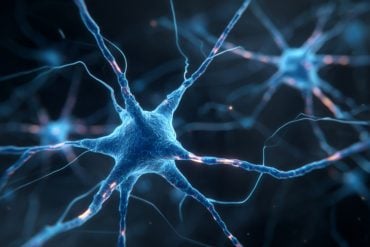Summary: Researchers have identified a natural substance, hederagenin, that blocks the NPFFR1 receptor, a protein involved in pain perception in the brain and spinal cord. NPFFR1 has long been a challenging target due to its similarities to related receptors, but advanced screening and computer modeling revealed its unique binding mode.
This discovery offers significant insights into the activation mechanisms of NPFFR1, paving the way for the development of new chronic pain treatments. The study highlights the value of interdisciplinary collaboration in translating basic research into real-world therapeutic applications.
Key Facts:
- NPFFR1 Role: NPFFR1 is a receptor found in the spinal cord and brain regions critical for pain perception.
- Hederagenin Discovery: Researchers identified hederagenin as a natural inhibitor of NPFFR1 through advanced screening techniques.
- Therapeutic Potential: Blocking NPFFR1 could lead to innovative treatments for chronic pain.
Source: Leipzig University
Neuropeptide FF receptor 1 (NPFFR1) is a G protein-coupled receptor (GPCR) involved in the signalling of various physiological processes in the human body.
In recent years, it has been discovered that this protein is mainly found in the spinal cord and in areas of the brain involved in pain perception. Blocking this receptor could help treat chronic pain.

This has not been possible until now because NPFFR1 has many similar relatives.
Two scientists from Beck-Sickinger’s research group tested thousands of substances. Michael Schaefer, Professor of Pharmacology at the Faculty of Medicine, provided a screening platform for this purpose.
The researchers came across the naturally occurring substance hederagenin. They characterised the binding mode of the inhibitor in detailed in vitro studies.
Computer modelling of the three-dimensional receptor-inhibitor complex by Professor Jens Meiler’s group at the Institute for Drug Discovery confirmed this insight.
“These findings make a significant contribution to understanding the activation mechanism of NPFFR1 and may facilitate the rational design of future therapeutics for chronic pain. They demonstrate the importance of basic research in translating findings into applications,” says Professor Beck-Sickinger.
The work was carried out as part of Collaborative Research Centre 1423, Structural Dynamics of GPCR Activation and Signaling.
This research success was only possible thanks to close collaboration between the various working groups at Leipzig University, as is made possible by such a Collaborative Research Centre.
About this pain research news
Author: Susann Sika
Source: Leipzig University
Contact: Susann Sika – Leipzig University
Image: The image is credited to Neuroscience News
Original Research: Open access.
“Hederagenin is a Highly Selective Antagonist of the Neuropeptide FF Receptor 1 that Reveals Mechanisms for Subtype Selectivity” by Annette Beck-Sickinger et al. Angewandte Chemie International Edition
Abstract
Hederagenin is a Highly Selective Antagonist of the Neuropeptide FF Receptor 1 that Reveals Mechanisms for Subtype Selectivity
RF-amide peptide receptors including the neuropeptide FF receptor 1 (NPFFR1) are G protein-coupled receptors (GPCRs) that modulate diverse physiological functions. High conservation of endogenous ligands and receptors makes the identification of selective ligands challenging.
Previously identified antagonists mimic the C-terminus of peptide ligands and lack selectivity towards the closely related neuropeptide FF receptor 2 (NPFFR2) or the neuropeptide Y1 receptor (Y1R). In a high-throughput screening, we identified the pentacyclic triterpenoid hederagenin (1) as a novel selective antagonist for the NPFFR1.
Hederagenin (1) is a natural product isolated from Hedera helix (ivy). We characterized its mode of activity using in vitro and in silico methods, revealing an overlapping binding site of the small molecule with the orthosteric peptide agonists.
Despite the high similarity of the orthosteric binding pockets of NPFFR1 and NPFFR2, hederagenin (1) shows strong subtype selectivity, particularly caused by slight differences in the shape of the binding pockets and the rigidity of the small molecule.
Several residues inhibiting the activity of hederagenin (1) at the NPFFR2 were identified. As NPFFR1 antagonists are discussed as potential candidates for the treatment of chronic pain, these insights into the structural determinants governing subtype specificity will facilitate the development of next-generation analgesics with improved safety and efficacy.






